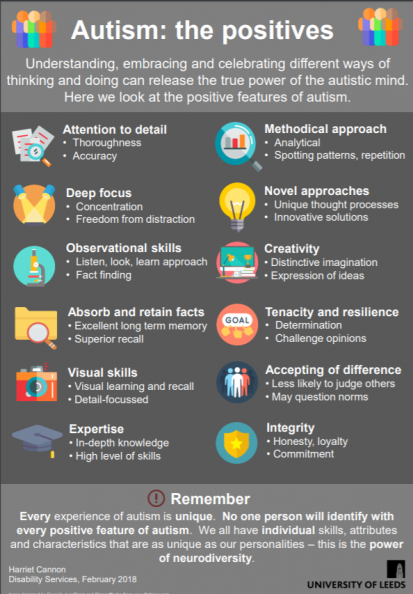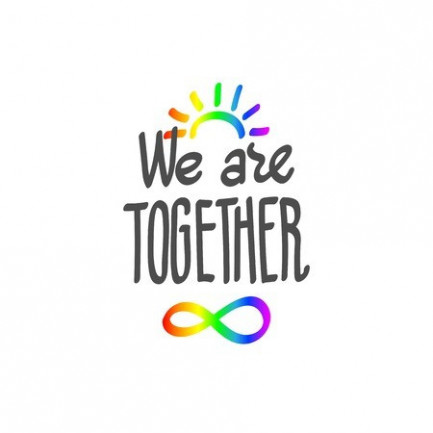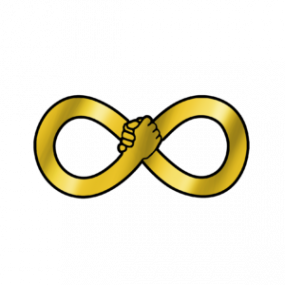
| 18 February 2025
Joanne was in banking but found herself a square peg in a round hole in the corporate world. After discovering she was autistic, certain struggles became more understandable. She moved into a career in teaching before starting to write full time. Here she explores the history of the Autism Puzzle Piece, whilst offering an inside perspective on what the symbol means for autistic people today.
There are many facets to being autistic, including the language and symbolism used for the purpose of identification, representation and advocation – the most well known one being the autism puzzle piece. In order to stay informed on the affairs affecting the autism community, and be the best advocate possible, it is important to understand the history behind the language and symbolism used to address them.
The symbol of the puzzle piece to represent people on the autism spectrum has a long and troubled past, from when it was first created.
Why? To understand this, you have to first understand where the symbol came from and the meaning attached to it.
Being autistic
Full disclosure: your writer is autistic. I don’t claim to speak for all autistic people. For me, being autistic is integral to who I am, strengths and foibles and all. When I first became aware of the puzzle piece as a symbol for autism, my first reaction was bafflement; I couldn’t find any aspect of it that I identified with or that represented my experience in any way. It only took a quick Google search or discussion with the other autistic people in my life to realise I was not alone in this sentiment.
Learning the history and controversy surrounding the symbol in the last few years has been saddening in some ways; when I realised people found me confusing, and other times frustrating. What was frustrating to me was that it seemed large organisations with a platform to set the status quo didn’t want to listen to those actually affected by autism.
Getting the language of the autism spectrum right
Before we go any further, you might want to pick me up straight away on the use of “being autistic” in the opening sentence. This is what’s called “identity-first language”, putting the adjective before the pronoun when describing or addressing someone. The other way to talk about autism, and disability in general, is person-first language, i.e. ‘a person who is autistic’, ‘ a man who has autism’ or ‘a woman with autism’.
Disability advocacy groups still debate whether to use language that’s identity-first, “disabled person”, or person-first, “a person with a disability”, to discuss issues. When it comes to autism communities, I understand that most prefer identity-first language, although there are still debates. For me, being autistic is as much a part of me as being tall, do I call myself a “tall woman”, or “a woman who is tall”? I’m a tall, autistic woman.
Autism advocate Chris Bonnello writes well about the use of language. In 2018, he conducted a huge piece of research in which most autistic people preferred identity-first language. Here, I’m going to stick with “autistic person”, and where needed “people without autism”.
The inception of the autism puzzle piece
History hasn’t treated people on the autism spectrum too kindly. Although autism as we know it was only described in the 1960s in the UK, this doesn’t mean autism is a modern condition. What we now understand as autistic traits would have been misclassified, misdiagnosed, and misunderstood for millennia before the differences in the way our minds worked began to be understood.
In the 1960s a group of parents of autistic children gathered in London to form the Autistic Children’s Aid Society, which would go on to become the National Autistic Society. The group was set up to raise awareness of autism.
The puzzle piece logo started here with the organisation and was designed to show that autism was puzzling to parents, with a crying child in the middle to show us they’re suffering. There are a couple of things that should trouble us about this inception story.
Is autism something we “suffer”?
A disability is something that limits a person in some way, and people with disabilities may face challenges. There are all kinds of disabilities – some are painful and come with huge difficulties such as Alzheimer’s or multiple sclerosis, whereas disabilities such as autism or limited sight don’t necessarily come with physical pain.
Every person with a disability has their own unique experience and assuming there is suffering in every case isn’t helpful. It’s like saying “every woman enjoys housework”, it’s a sexist idea because we know to treat all women as individuals – some enjoy it and some don’t. When you assume that all people with disabilities are suffering, it’s ableist for the same reason.
Pain is an even better example of complete subjectivity. Whilst many avoid it, some find pleasure in pain and thus seek it in small doses – for example, through getting tattoos on their body. When you assume, or rather, impose the idea that people, on a whole, suffer with autism, you are in fact speaking to many individuals with their own individual brains and thus experiences of the disability. By imposing that negative narrative, you are implying that their intrinsic feelings about their experience is wrong, thus creating a self-fulfilling prophecy of suffering.
Don’t get me wrong, it’s not always easy being autistic. The world isn’t designed for us; sensory processing issues, the demand for eye contact, and the dominance of verbal communication are just a few of the challenges an autistic person might face every day. Despite this, there are many benefits, such as the ones below, to having autism, some of which actually give us an advantage (ability rather than disability) over others.

Nothing about us without us
This new symbol for the autistic spectrum had no input from autistic people. Whether it’s for autism or any other group or person with a disability, those who understand the issue best are those who experience it.
From the very beginning of the puzzle piece symbol, it excluded those with lived experience.
What came next for autism awareness and the puzzle piece?
The puzzle piece was adopted as a logo for other organisations pushing for autism awareness. One such organisation was Autism Speaks, who still use the symbol.
Opinions about the organisation are strong in the autism advocacy community – you may have already heard of them. Language and techniques used by the American organisation range from troubling to offensive to many.
A lot of their budget is spent on research for a “cure”, yet neurodiversity conditions like autism don’t need to be cured. Neurodiversity means that conditions such as autism and ADHD, that are caused by neurological differences, are a natural part of the variance across all of us. Being autistic isn’t something that needs a cure because it’s not pathological.
What’s more, their slogan, “until all the pieces fit” ties seamlessly into the symbolism of missing puzzle pieces, thus reflecting the narrative that autistic people are somehow incomplete and need to be fixed. As far as we know, autism is caused by a different wiring mechanism in the brain; I’m not missing anything and I’m certainly not broken. Talk of fixing, like cures, alienates and “others” autistic people and many would call the ideas ableist.
“Think about an autistic person that you know, is there anything that you’d want to change about them?”
From awareness to acceptance – the new symbols
The autism puzzle piece is problematic for reasons that should be clearer now. If you’ve used it before, don’t dwell on it, but hopefully, you’ll avoid it in the future. To become a better ally and advocate, it’s worth learning about the myriad of other challenges autistic people face; you probably already know they go far beyond a puzzle piece symbol.
What can we do to help autistic people? When it comes to symbols and actions, there are a few suggestions.
The rainbow infinity logo

Infinity has been adopted by many in the community as a symbol for autism as well as neurodiversity to show the endless possibilities there are. Why the rainbow? Autism is a spectrum, just like the rainbow is the spectrum of visible light, and is full of wonder and opportunity too.
Gold

The chemical symbol for gold is Au, which is rather handily the first two letters of autism. It’s used to show the bright and shining future for people with autism, rather than a lifetime being seen as suffering and being told to fit into our surroundings.
Is symbolism enough?
For many years there have been campaigns, in good faith, to raise awareness of autism. But is that enough? Especially in a professional setting, autism is known about much more, but is it accepted?
Rather than simply knowing about autism, the challenge is to make the accommodations an autistic person needs. Simple supports such as checking if the lighting in your office is ok, or having access to noise-cancelling headphones shows acceptance of the challenges an autistic person may face.
Final thoughts
Is the autism puzzle piece ableist? Most autism advocates say “yes”. The connotations of the symbol – missing pieces, confused and puzzled parents, something incomplete – are all things we shouldn’t be attaching to any person with a disability or neurodiversity.
Like the language we use, symbols should be led by those they represent. Choosing to advocate for autism acceptance with the rainbow infinity symbol or the colour gold will make a difference to your friends, audience and autistic counterparts – it not only shows you care but that you are actively listening and engaging.
eLearning for Autism and Learning Disabilities Awareness
Our eLearning course enable learners to develop and deepen their knowledge on learning disabilities and autism, including understanding the barriers people face in a health and social care setting. By the end of this course, learners will understand the importance and requirements of accommodating the needs of individuals with learning disabilities and autism. This will make their experience in various settings more positive and supportive.
